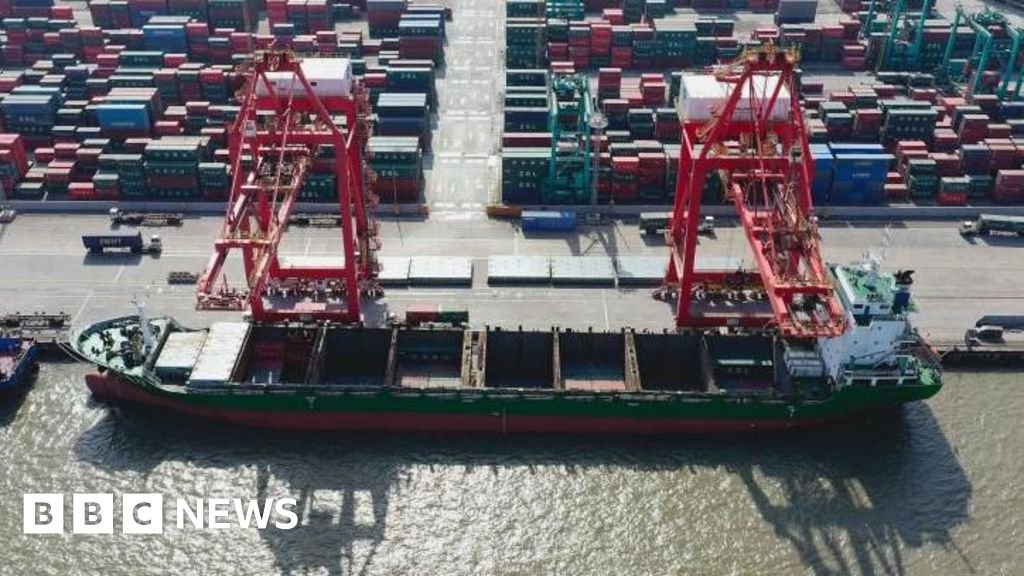US-China trade tensions back as port fees take effect
The US and China started charging new port fees on each other’s ships on Tuesday, as trade tensions between the world’s two biggest economies increase. China says its levies aim to safeguard the country’s shipping industry from “discriminatory” measures and apply to US-owned, operated, built, or flagged vessels but not Chinese-built ships. It comes in…
The US and China started charging new port fees on each other’s ships on Tuesday, as trade tensions between the world’s two biggest economies increase.
China says its levies aim to safeguard the country’s shipping industry from “discriminatory” measures and apply to US-owned, operated, built, or flagged vessels but not Chinese-built ships.
It comes in retaliation to US fees on Chinese ships, which Washington says are designed to support American shipping companies.
Beijing announced the levies last week alongside moves to tighten controls on its rare earth exports. US President Donald Trump responded with a threat of an additional 100% tariff on China.
Also on Tuesday, new US tariffs came into effect on imported timber, kitchen cabinets and upholstered furniture, much of which comes from China.
US Treasury Secretary Scott Bessent said on Monday that Trump and China’s President Xi Jinping are still expected to meet in South Korea in late October as they try to de-escalate trade tensions.
“The 100% tariff does not have to happen… The relationship, despite this announcement last week, is good. Lines of communication have reopened, so we’ll see where it goes,” said Bessent.
“China’s position is consistent. If there’s a fight, we’ll fight to the end; if there’s a talk, the door is open,” said a Chinese commerce ministry spokesperson on Tuesday.
“The US cannot demand talks while simultaneously imposing new restrictive measures with threats and intimidation. This is not the right way to engage with China,” they said in a statement.
Chinese state media said the US duties on Chinese ships violated a maritime transport agreement between the two countries.
In retaliation, US-linked ships berthing at Chinese ports are now charged 400 yuan (£42; $56) per net tonne, according to Chinese state media CCTV.
The duties are closely matched to the port fees imposed by Washington. They will also apply to ships operated by US firms, and those in which an American company holds a stake of 25% or more.
The fees will rise each year, reaching 1,120 yuan per tonne in April of 2028, state broadcaster CCTV said.
Ships carrying dry bulk cargoes like coal and other raw materials could have to pay up to $3m in port fees from today, said freight analyst Claire Chong.
By 2028, some the biggest vessels that carry nearly 200,000 tonnes in dry bulk could have to pay more than $10m in fees, she estimates.
These fees add up to “significant” costs to the industry, said Ms Chong from shipbroker Thurlestone Shipping.
The exemption for Chinese-built vessels, which account for nearly half of the global dry bulk fleet, could ease some of the impact of the new port fees, she said.
Also on Tuesday, Beijing added five US subsidiaries of South Korean shipbuilder Hanwha Ocean to its sanction list, further escalating tensions with Washington.
The latest measures come despite Washington and Beijing agreeing a tariffs truce earlier this year.
In May, the two sides had agreed to drop triple-digit tariffs on each others’ goods. which had raised the prospect of trade halting between them.
This left US tariffs on Chinese goods facing an added 30% levy compared with the start of the year, while US goods entering China face a 10% tariff.






